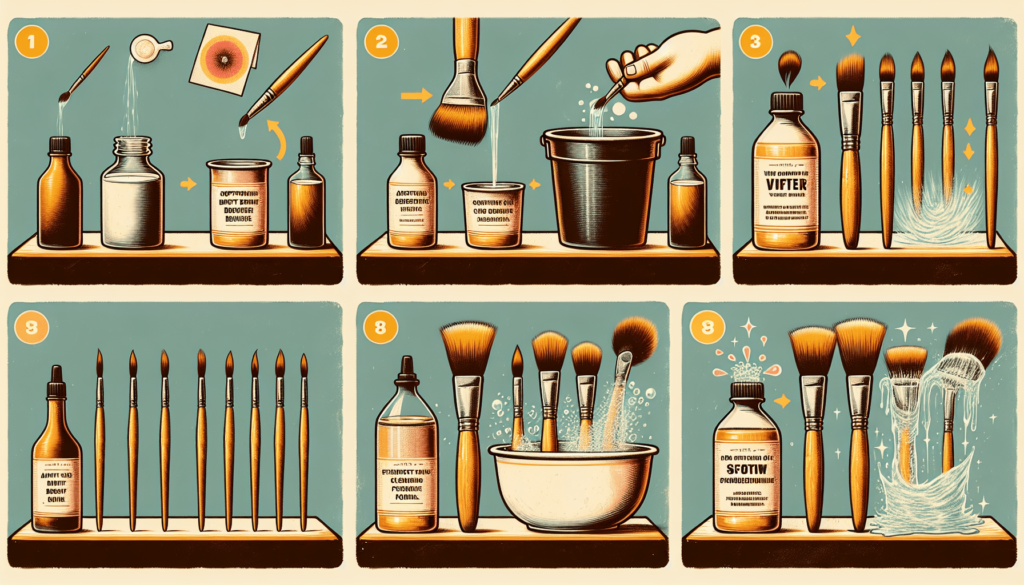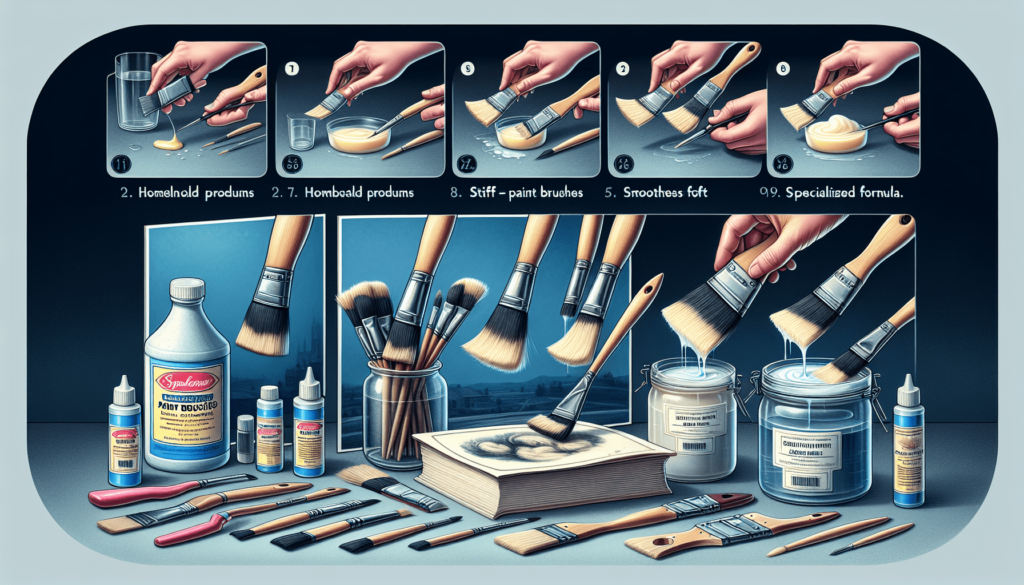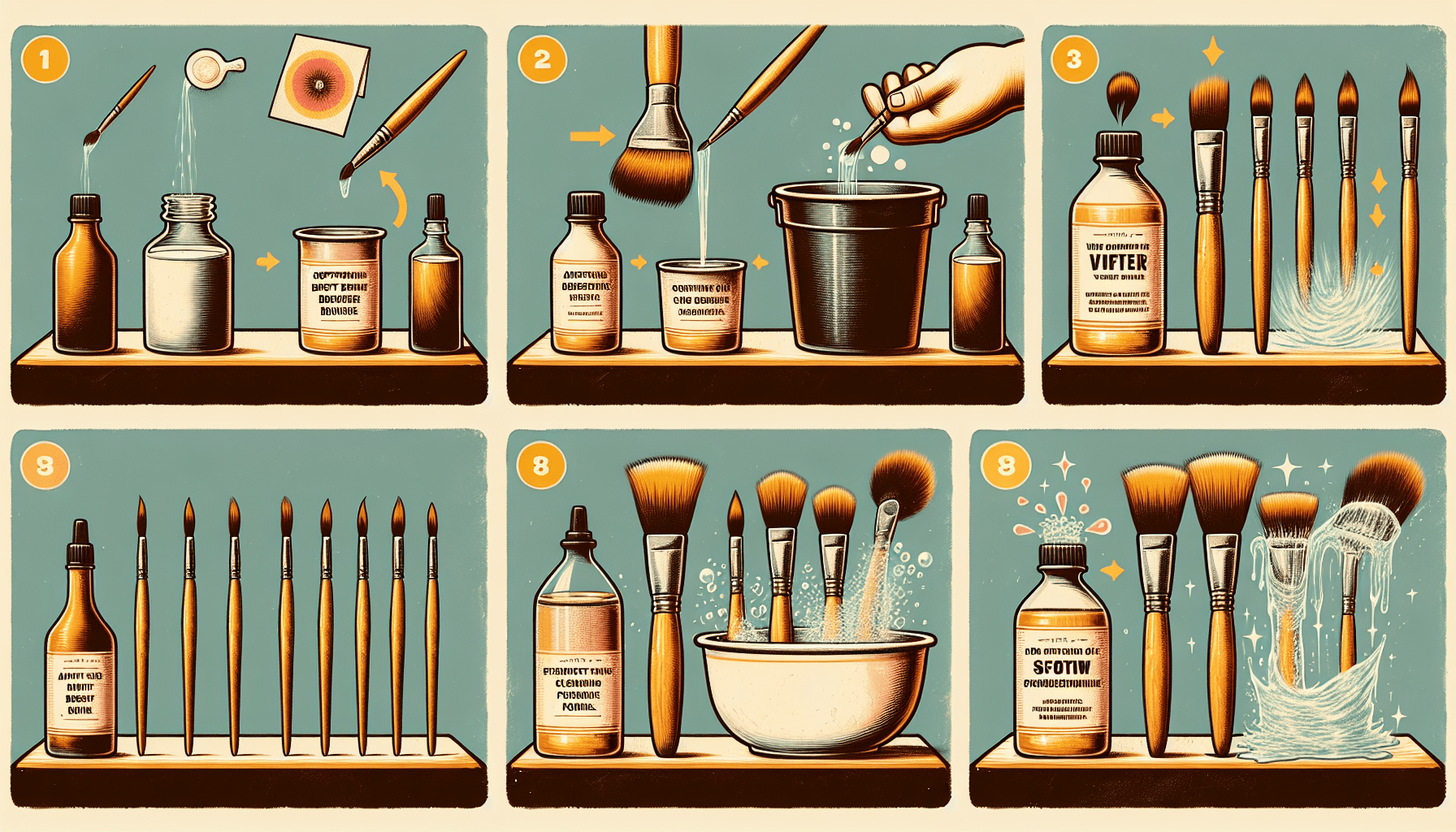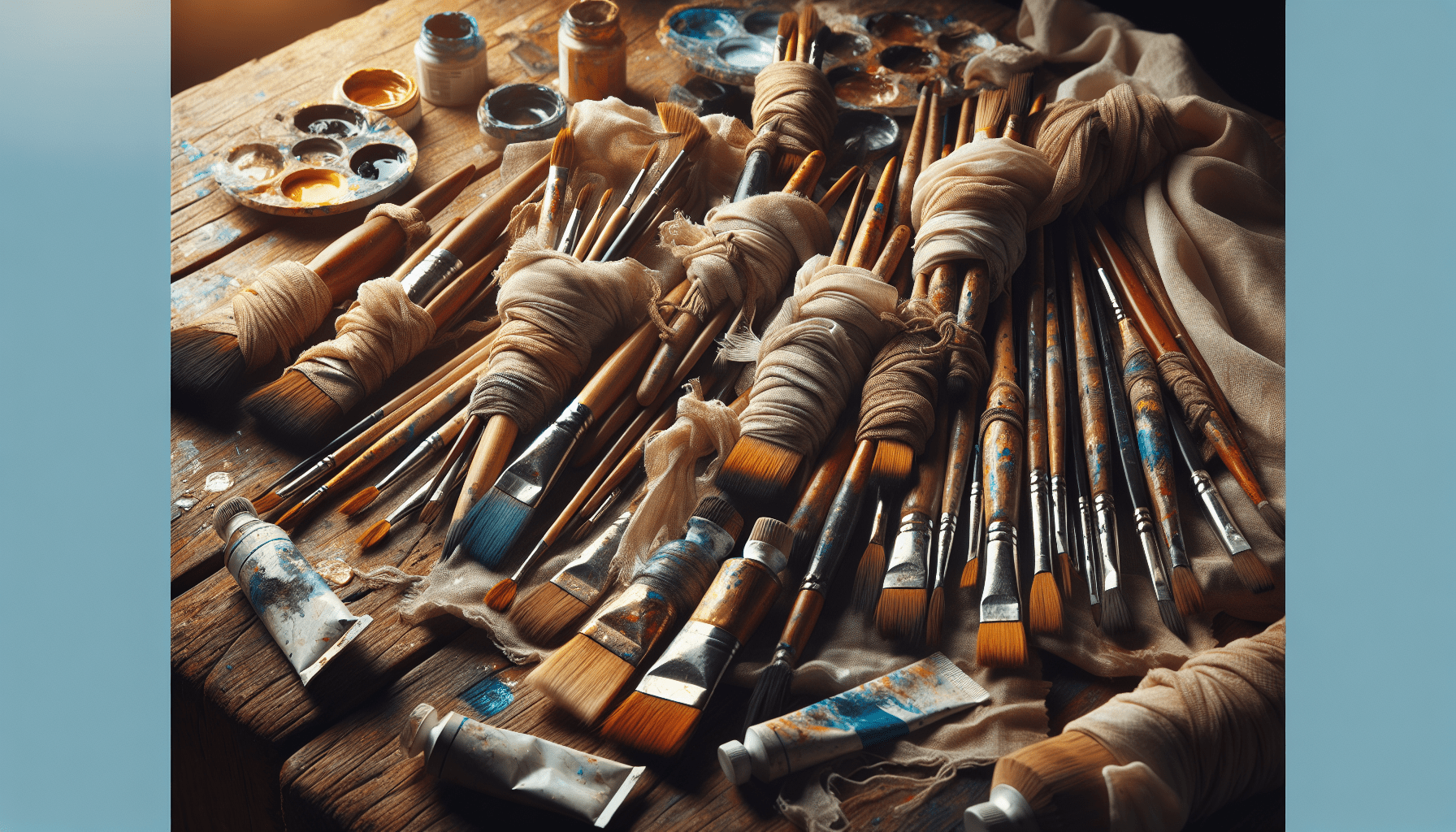In the world of art and DIY projects, there is nothing more frustrating than having to deal with a hard paint brush. Whether you’re an aspiring artist or a seasoned craftsman, the stiffness of a brush can hinder your creative process and produce subpar results. Fear not, for this article will guide you through the simple yet effective techniques to soften a hard paint brush, reviving its once supple bristles and allowing you to achieve the smooth and precise strokes you desire.
Why Soften a Hard Paint Brush?
Preserve the brush
Softening a hard paint brush is essential for preserving the lifespan of the brush. When a brush becomes hardened, the bristles can become brittle and start to break off. By softening the brush, you can prevent this damage and ensure that your brush remains in good condition for future use.
Improve brush performance
A hard paint brush can negatively impact your painting experience. The stiffness of the brush can make it challenging to achieve smooth and even brushstrokes. Softening the brush not only preserves its condition but also helps improve its performance, allowing you to create beautiful and precise strokes.
Tools and Materials Needed
To soften a hard paint brush, you will need the following tools and materials:
- Hard paint brush
- Container
- Boiling water
- Fabric softener
- Vinegar
- Liquid dish soap
- Paintbrush conditioner
- Brush comb
- Paper towels
- Optional: Baby oil or vegetable oil

Step-by-Step Process
Prepare the Work Area
Before you begin softening your hard paint brush, it’s important to prepare your work area properly. Lay down some paper towels or a protective surface to avoid any potential mess or damage to the surrounding area.
Remove Excess Paint
If there is excess paint on your brush, you should remove it before attempting to soften the brush. You can gently scrape off the paint using a palette knife or wipe it off with a paper towel.
Evaluate Brush Condition
Once the excess paint is removed, evaluate the condition of your brush. Assess the extent of the hardness and determine the appropriate method for softening it.
Choose Softening Method
There are various methods available to soften a hard paint brush. Choose the one that is most suitable for your specific brush and personal preference.
Method 1: Boiling Water
To soften a paint brush with boiling water, bring a container of water to a boil on the stove. Once the water is boiling, dip the brush into the water for a few minutes. Remove the brush from the water and gently reshape the bristles. Repeat the process if necessary.
Method 2: Fabric Softener
Fabric softener can also be used to soften a hard paint brush. Mix a small amount of fabric softener with water in a container. Soak the brush in the mixture for several hours or overnight. Rinse the brush with warm water and reshape the bristles before using.
Method 3: Vinegar
Vinegar is known for its ability to break down tough substances, making it an effective solution for softening a hard paint brush. Fill a container with vinegar and soak the brush in it for about an hour. Rinse the brush with warm water and reshape the bristles.
Method 4: Liquid Dish Soap
Liquid dish soap can help soften a hard paint brush as well. Fill a container with warm water and add a few drops of dish soap. Soak the brush in the mixture for a few hours. Rinse the brush with warm water and reshape the bristles.
Method 5: Paintbrush Conditioner
Using a paintbrush conditioner is another method to soften a hard brush. Apply the conditioner to the bristles and let it sit for a few hours or overnight. Rinse the brush with warm water and reshape the bristles.
Method 6: Using a Brush Comb
A brush comb is a handy tool for softening a hard paint brush. Gently comb through the bristles, starting from the base and working your way up. This helps to loosen and separate the hardened bristles, restoring the brush’s flexibility.
Additional Tips
- Avoid using excessive force while trying to soften a brush, as this may damage the bristles.
- If the brush has become extremely hardened, you may need to repeat the softening process several times.
- Be patient and allow the brush to dry completely before using it again.
Final Drying and Shaping
Once you have softened your hard paint brush, gently squeeze out any excess water and reshape the bristles to their desired shape. Use your fingers to shape the bristles back into a point or flat shape, depending on your needs. Lay the brush flat on a clean surface to dry completely.
Optional: Using Baby Oil or Vegetable Oil
If you want to give your brush an extra softening boost, you can apply a small amount of baby oil or vegetable oil to the bristles after they have dried. This helps to condition and soften the bristles, keeping them in optimal condition.
Preventive Measures
To avoid ending up with a hard paint brush in the first place, there are some preventive measures you can take:
Proper Brush Storage
After using a paint brush, clean it thoroughly and store it properly. Make sure to remove any excess paint before cleaning. Store the brush in a clean and dry place, such as a brush holder or a plastic bag, to prevent the bristles from becoming hardened.
Cleaning After Use
Cleaning your paint brush immediately after use is crucial in maintaining its softness. Use warm soapy water or an appropriate brush cleaner to remove any residual paint. Gently rinse the brush and reshape the bristles before allowing it to dry.
Routine Maintenance
Regularly inspect your paint brushes for any signs of hardening. If you notice any stiffness in the bristles, take immediate action to soften the brush using one of the aforementioned methods.
Choosing the Right Paint Thinner or Solvent
Using the correct paint thinner or solvent is important when working with certain types of paint. Using the wrong solvent can lead to the hardening of the brush bristles. Make sure to use the appropriate paint thinner or solvent recommended for the type of paint you are using.

Conclusion
Softening a hard paint brush is a crucial step in preserving the brush and maintaining its performance. By following the step-by-step process and utilizing the various methods available, you can effectively bring life back to your hardened brushes. Taking preventive measures such as proper storage, regular cleaning, and routine maintenance can also contribute to prolonging the lifespan of your brushes and ensuring an efficient and enjoyable painting experience.



